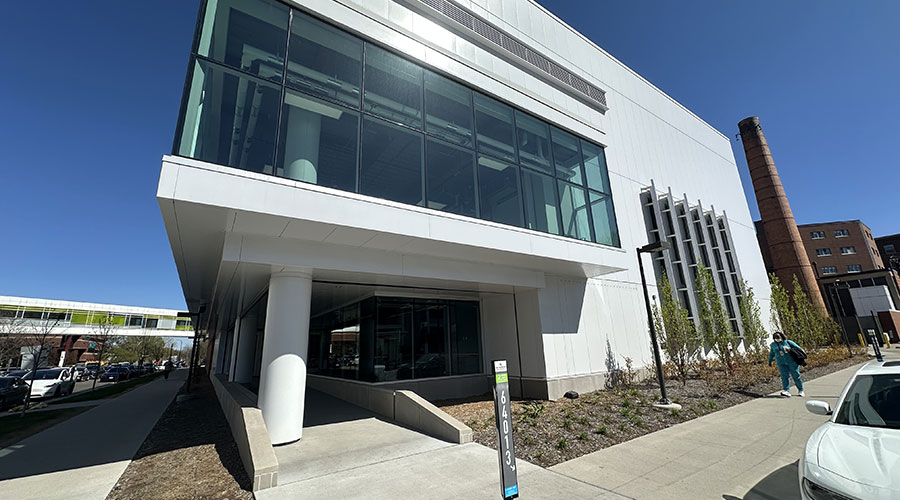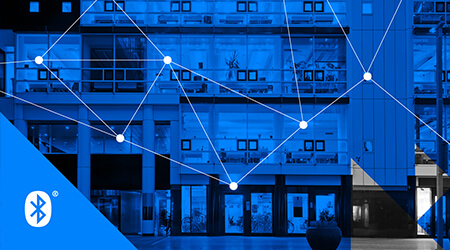SPONSORED
Bluetooth - Branded Feature
Increase Reliability, Reduce Costs, And Enhance Your Smart Building ROI
The idea of the smart building has evolved well beyond concept and is quickly becoming more prevalent across a wide range of buildings and industries. Already museums are using sensors and beacons to gather environmental data to better control museum conditions to preserve precious artwork, retail stores are deploying indoor navigation and wayfinding solutions to improve the customer experience, and office buildings are leveraging sensor networks to cut costs and optimize the working environment for employees.
Bluetooth® technology is quickly becoming the top choice for supporting these reliable, low-power smart building services. Bluetooth innovations enable condition monitoring innovations that track system health and performance, location services that support optimal building navigation and asset tracking, and automation and control solutions that improve the lifespan of essential systems — all while reducing costs and enhancing facility infrastructure ROI.
Condition Monitoring
Predictive maintenance will play a significant role in optimizing productivity in the coming years, and it's anticipated that 83% of companies will invest in predictive maintenance by 2020. Smart industry facilities are especially well positioned to reap a greater ROI from predictive maintenance advancements.
Bluetooth sensor networks deployed at scale across a factory floor enable real-time monitoring of system performance and tolerances, creating intelligent machines and whole manufacturing lines that can predict and problem solve. Gartner Inc. forecasts that by 2020, more than 1.3 billion sensor deployments will support condition monitoring.
The Van Gogh Museum in Amsterdam is already leveraging sensor networks to support their daily operations, having replaced their existing halogen lighting systems with Bluetooth enabled LED modules. In doing so, the museum's lights are now controlled by Bluetooth switches using EnOcean energy harvesting technology.
The Van Gogh Museum also installed Xicato sensors, which use Bluetooth technology to broadcast data, including occupancy, lux levels, temperature, and humidity information to help staff understand and control the indoor environment. This is critical to preserving the museum's priceless pieces of art. The luminaries, sensors, and gateways are also enabled as beacons to provide visitors with a range of location services throughout the museum.
Location Services
Around the world, Bluetooth technology is powering building-wide networks of sensors and beacons that enable indoor positioning and location-based services like way finding, asset management, and point-of-interest solutions. These advanced services enhance the occupant and visitor experience and extend the long-term return of smart building investments.
Mall of America relies on the power of Bluetooth beacons to empower customer navigation and improve their overall guest experience. With a Bluetooth beacon infrastructure in place, guests can easily find their way around the mall while gaining access to additional information, such as store hours and estimated time of arrival. ABI Research predicts 10x growth in annual volume of Bluetooth location services by 2022.
Building Automation
Building automation is the automatic, centralized control of a building's essential systems, including HVAC (heating, ventilation, and air conditioning), lighting, and security. Bluetooth enables building automation solutions that harness energy savings, lower operating costs, and improve the life cycle of a building's core systems. According to ABI Research, we expect to see a 350% growth in annual volume of Bluetooth automation and control devices by 2022.
Recently, Silvair upgraded their office with a Bluetooth enabled lighting platform consisting of hundreds of lights supported by various sensors and switches. Their ambient light sensors support daylight harvesting and automatically ensure a consistent level of light all day. Plus, occupancy sensors identify when rooms are occupied, helping to cut costs and optimize the working environment for employees.
A Platform Built on Lighting
Lighting control systems have served as a key use case driving the increase of Bluetooth device network implementation. A building's lighting system provides a natural grid through which all devices in a Bluetooth enabled network can pass messages and establish whole-building control, monitoring, and automation systems within a facility. This wireless lighting solution can also function as a platform to enable indoor positioning and location services — including point-of-interest solutions, indoor navigation, asset tracking, and improved space utilization.
Building on a 20-Year Foundation of Blue
It's exciting to see how far Bluetooth technology has come in the last 20 years, thanks to the innovations of more than 34,000 member companies. With the release of Bluetooth mesh and recent advancements in beacon technology, Bluetooth is now powering the smart building in commercial and industrial environments where security, reliability, and performance requirements are highest.
Learn more about Bluetooth technology and discover additional resources for optimizing building automation and maintenance with these papers, blogs and videos:








